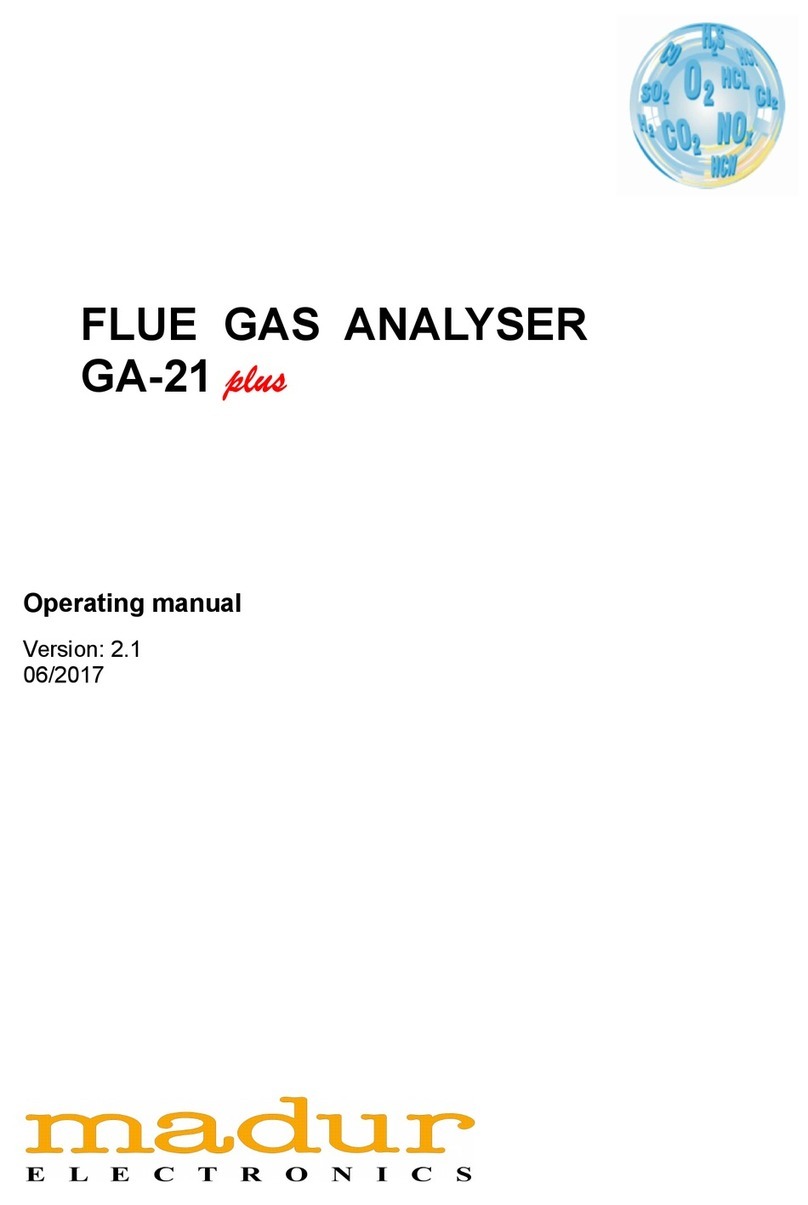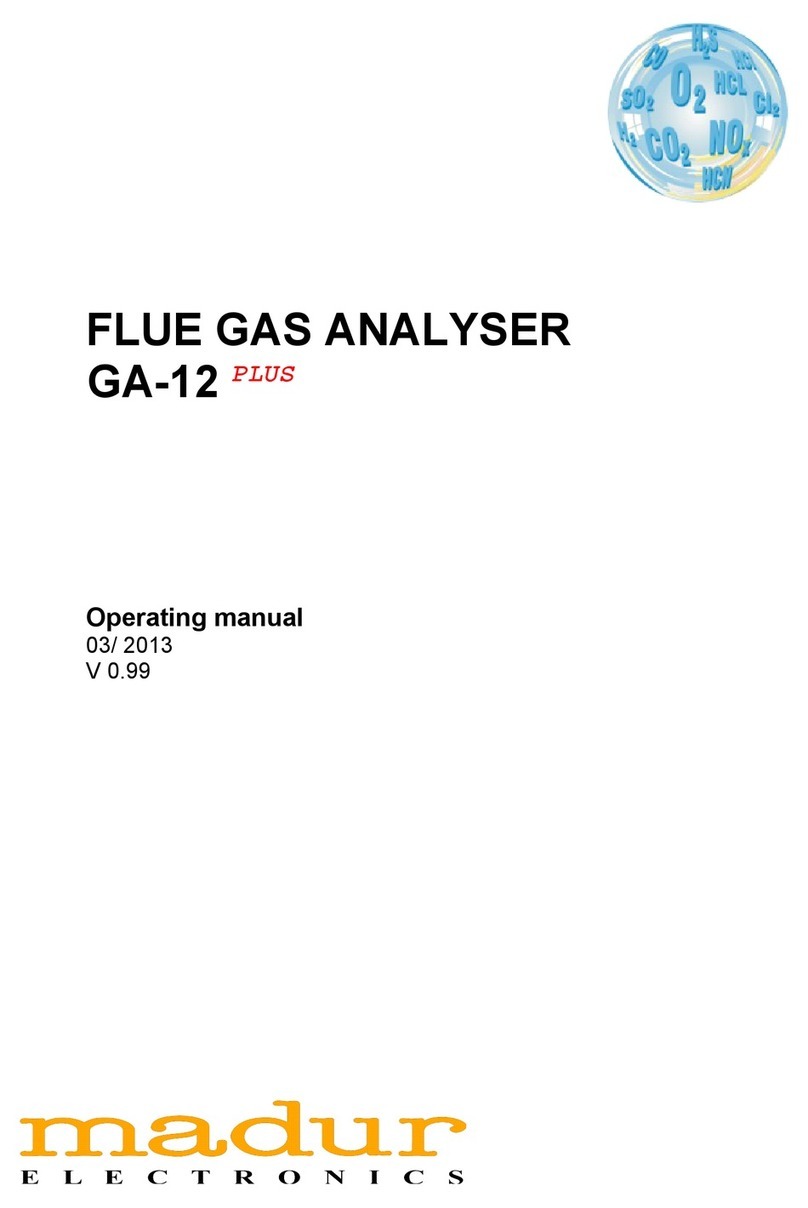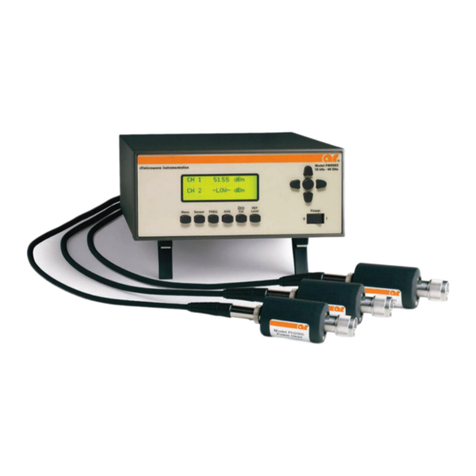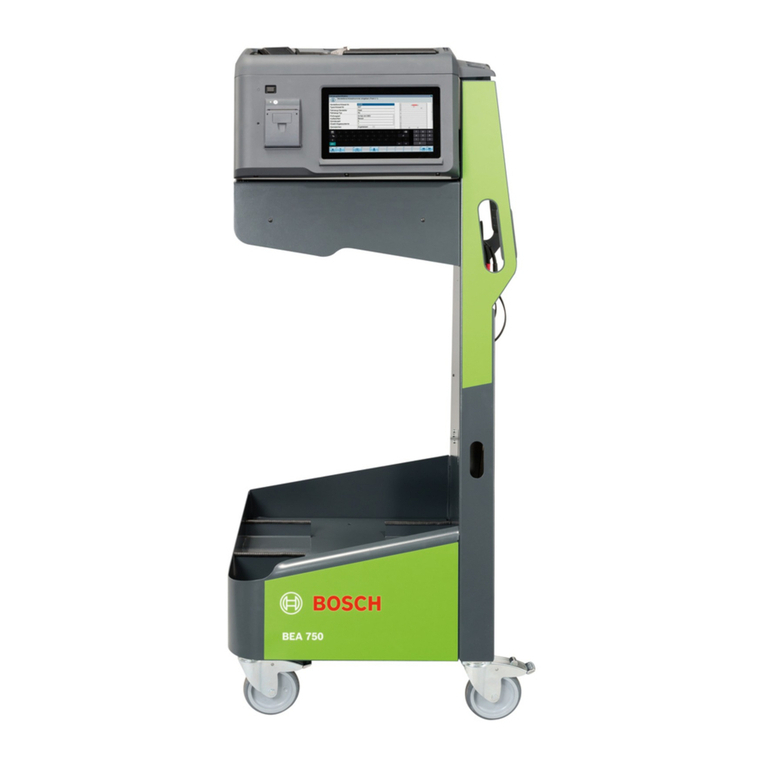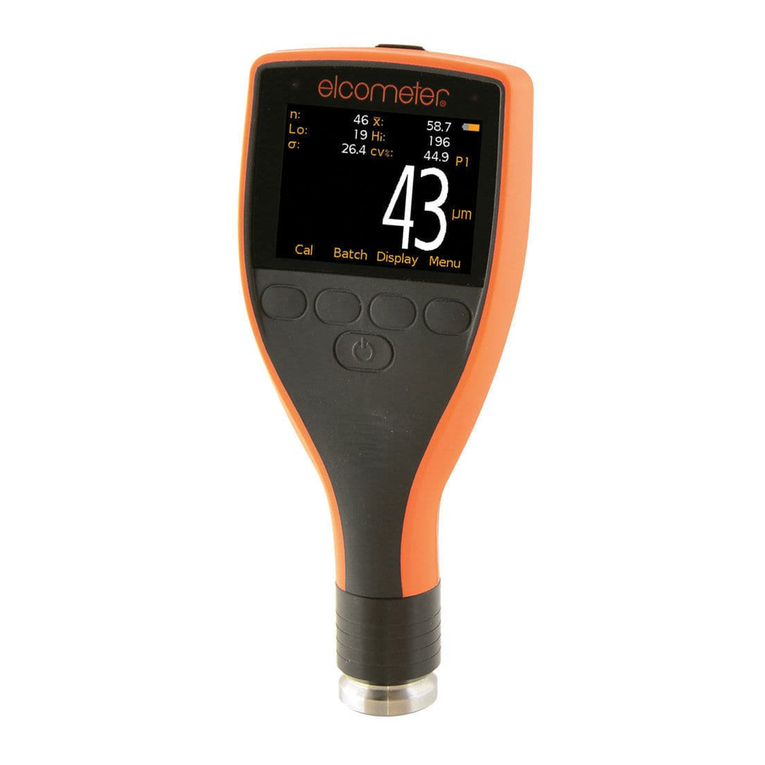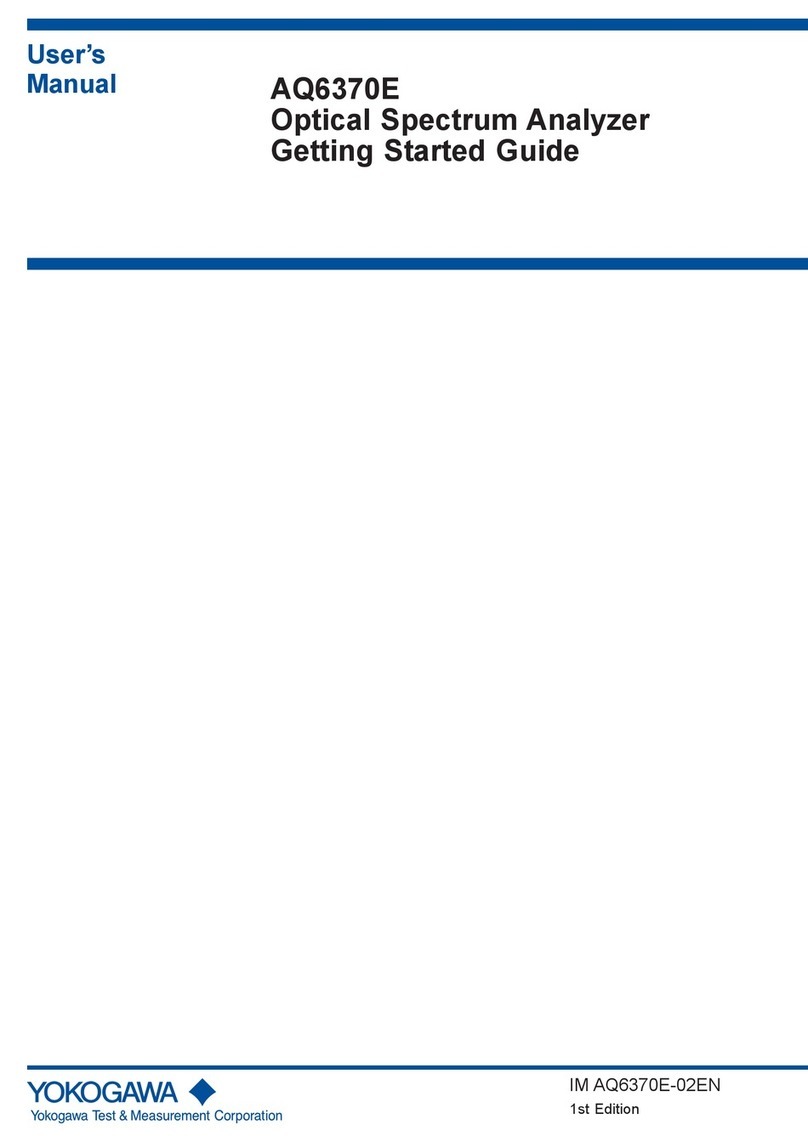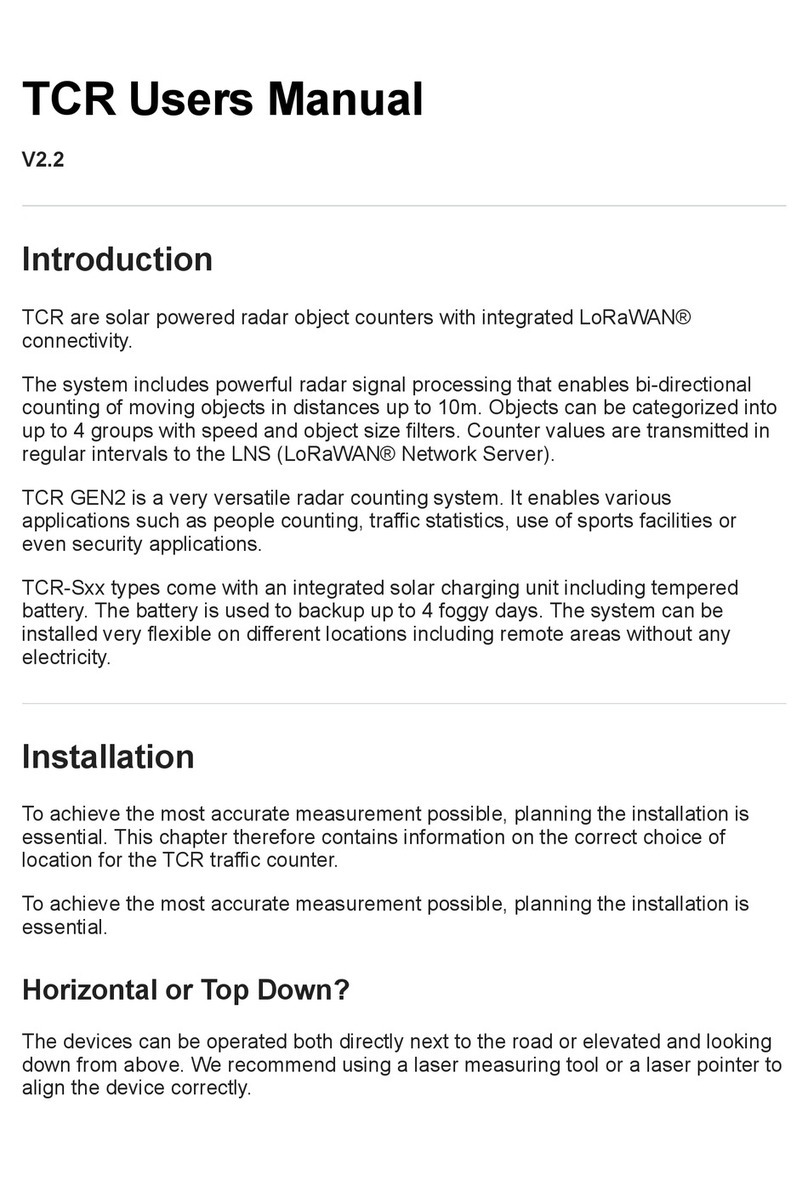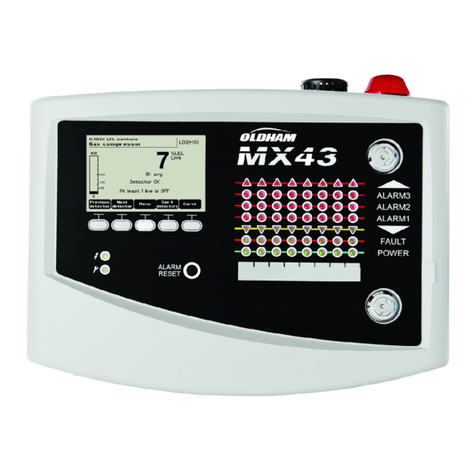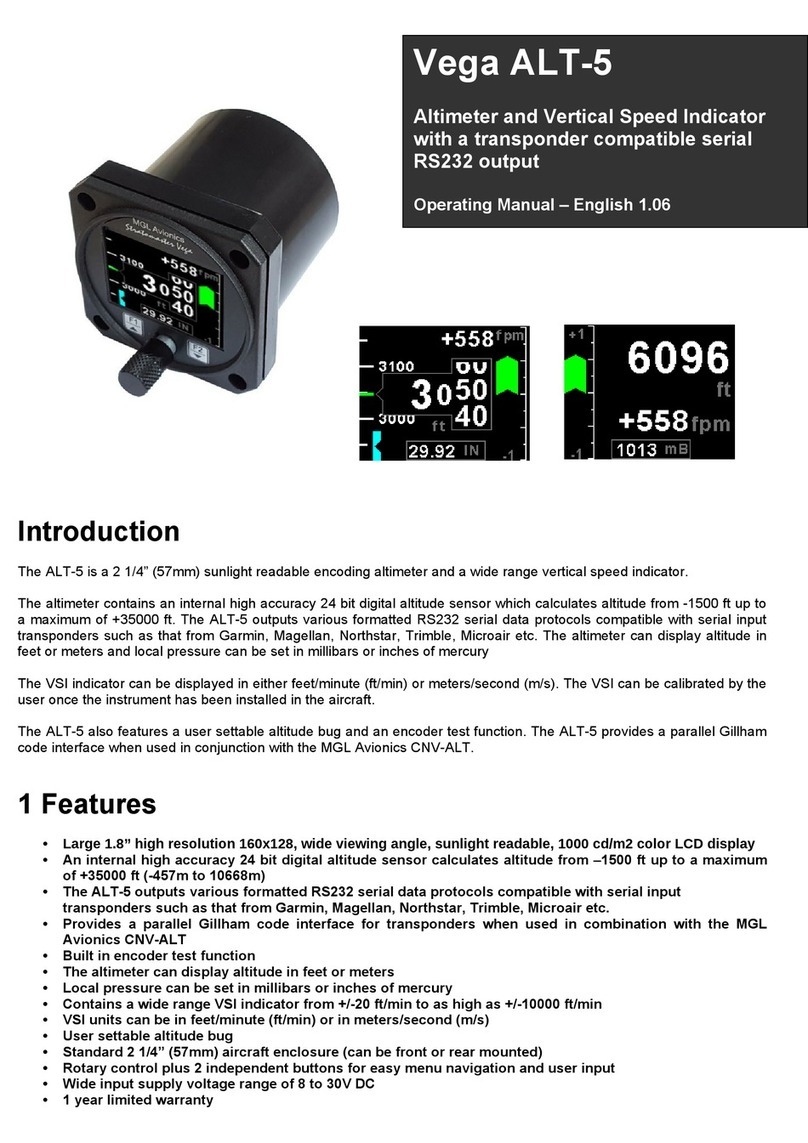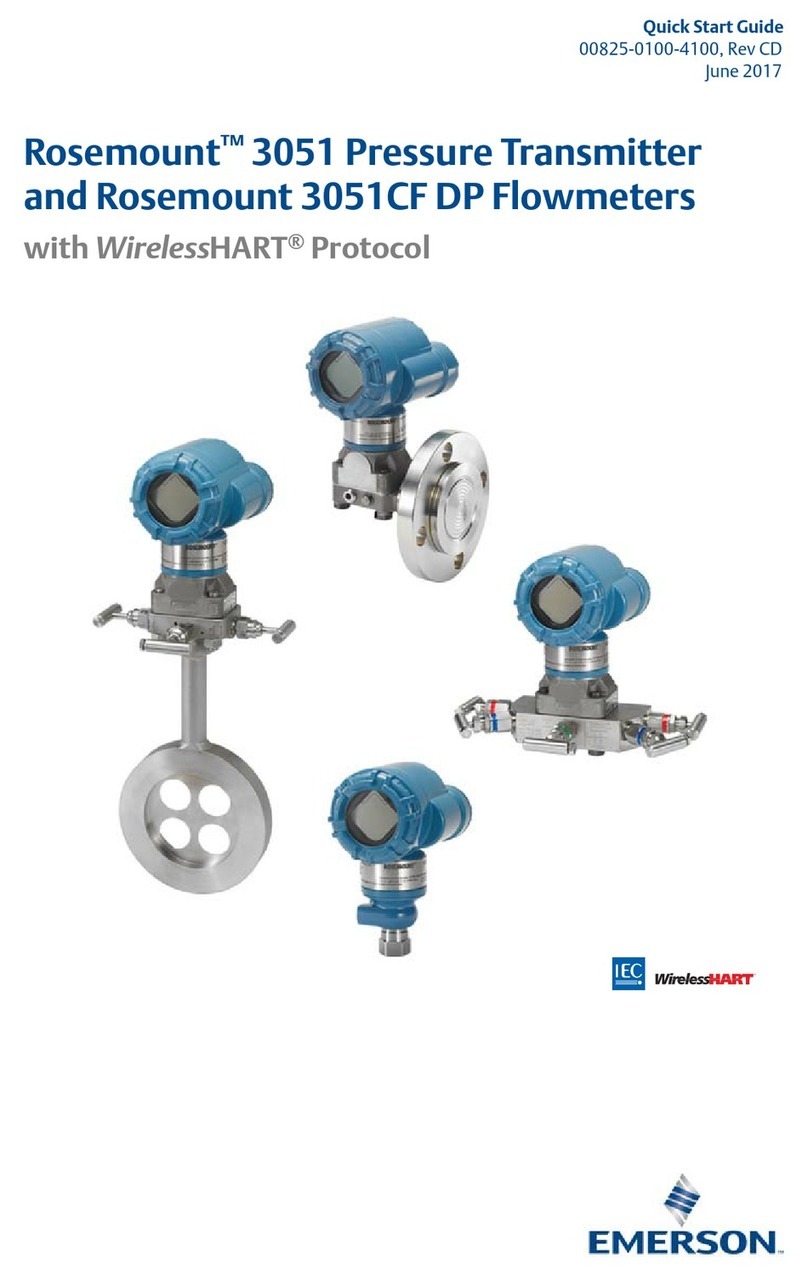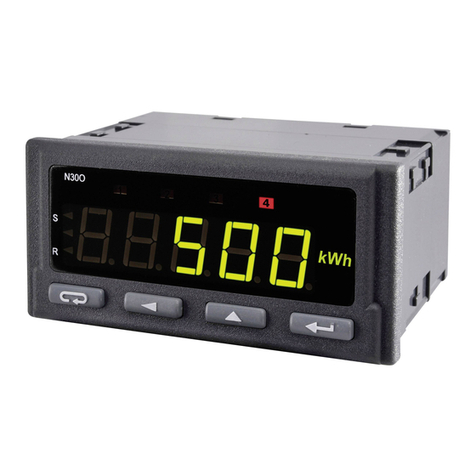Madur MAMOS User manual

MAMOS – ONLINE MONITORING SYSTEM
User guide
Version: 9.3
08/2017

www.madur.com User manual maMoS
Index
1. Introduction.......................................................................................................................................................................................................................................................... 4
2. Construction......................................................................................................................................................................................................................................................... 5
2.1. Standard equipment.....................................................................................................................................................................................................................................
2.1.1. Analyser module.................................................................................................................................................................................................................................. 6
2.1.2. Panel wit gas and electric connectors............................................................................................................................................................................................. 6
2.1.3. Display.................................................................................................................................................................................................................................................. 8
2.1.4. Work knob............................................................................................................................................................................................................................................. 9
2.1.5. SMPS – switc ed mode power supply............................................................................................................................................................................................. 10
2.1.6. MD2 gas dryer..................................................................................................................................................................................................................................... 11
2.1.7. MD3 gas dryer..................................................................................................................................................................................................................................... 12
2.1.8. Nafion gas dryer................................................................................................................................................................................................................................. 13
2.1.9. Dual-mode gas port............................................................................................................................................................................................................................ 13
2.2. Inside mamos analyser.............................................................................................................................................................................................................................. 1
2.2.1. Gas sensors........................................................................................................................................................................................................................................ 16
2.2.2. Gas pump............................................................................................................................................................................................................................................ 16
2.2.3. Ventilation valve................................................................................................................................................................................................................................. 17
2.2.4. Condensate pump.............................................................................................................................................................................................................................. 17
2.2.5. Electric terminals............................................................................................................................................................................................................................... 18
2.2.6. Communication interfaces................................................................................................................................................................................................................ 19
2.3. Optional equipment.................................................................................................................................................................................................................................... 19
2.3.1. Stationary gas probe.......................................................................................................................................................................................................................... 20
2.3.2. Heated line.......................................................................................................................................................................................................................................... 21
2.3.3. Heated filter........................................................................................................................................................................................................................................ 22
2.3.4. IP55 cabinet........................................................................................................................................................................................................................................ 23
2.3.5. Data-logger......................................................................................................................................................................................................................................... 23
2.3.5.1. Control button.............................................................................................................................................................................................................................. 24
2.3.5.2. Format SD card............................................................................................................................................................................................................................ 24
2.3.5.3. Status LED.................................................................................................................................................................................................................................... 2
2.4. Differential pressure sensor...................................................................................................................................................................................................................... 26
3. Possible working configurations...................................................................................................................................................................................................................... 27
3.1. Compact configurations............................................................................................................................................................................................................................ 27
3.2. Split configuration...................................................................................................................................................................................................................................... 27
3.3. Twin-split configuration............................................................................................................................................................................................................................. 28
3.3.1. Twin-split configuration wit one remote dryer.............................................................................................................................................................................. 28
2

www.madur.com User manual maMoS
4. Gas C annel....................................................................................................................................................................................................................................................... 29
4.1. Single gas c annel, basic configuration.................................................................................................................................................................................................. 29
4.2. AUX gas c annel........................................................................................................................................................................................................................................ 30
4.3. Hig -pressure configuration..................................................................................................................................................................................................................... 31
5. Work modes........................................................................................................................................................................................................................................................ 32
5.1. Work p ases............................................................................................................................................................................................................................................... 32
5.1.1. Initial p ases...................................................................................................................................................................................................................................... 32
5.1.1.1. Warming up.................................................................................................................................................................................................................................. 32
5.1.1.2. FirstZeroing.................................................................................................................................................................................................................................. 33
5.1.2. Ventilation........................................................................................................................................................................................................................................... 33
5.1.3. Infusion............................................................................................................................................................................................................................................... 33
5.1.4. Measurement...................................................................................................................................................................................................................................... 33
5.1.5. AUX c annel....................................................................................................................................................................................................................................... 34
5.1.6. Prestandby and Standby................................................................................................................................................................................................................... 34
5.2. Work modes................................................................................................................................................................................................................................................ 34
5.2.1. Cyclic measurements........................................................................................................................................................................................................................ 34
5.2.2. Measurements according to sc eduler............................................................................................................................................................................................ 37
5.2.3. Measurements triggered by digital input......................................................................................................................................................................................... 38
5.2.3.1. Measurements controlled by external process......................................................................................................................................................................... 39
5.2.4. Flip-Flop for Twin-Split configuration.............................................................................................................................................................................................. 39
5.2.5. Long-term, mont ly-cyclic mode...................................................................................................................................................................................................... 40
5.2.6. Long-term mode wit adjustable lengt (1-30 days)....................................................................................................................................................................... 40
5.2.7. Restrictions w en using long-term work modes............................................................................................................................................................................. 41
6. Basic Service operations................................................................................................................................................................................................................................... 41
6.1. Replacement of filter inlet in MD2 gas dryer............................................................................................................................................................................................ 41
6.2. Replacement of filter inlet in MD3 gas dryer............................................................................................................................................................................................ 42
6.3. Replacement of ydrop obic filters in gas analyser.............................................................................................................................................................................. 43
6.4. Replacement of peristaltic pump’s ose.................................................................................................................................................................................................. 44
6.5. Troubles ooting in case of “Flow too low” error.................................................................................................................................................................................... 46
3

www.madur.com User manual maMoS
1. INTRODUCTION
Mamos is a high quality, compact-size online gas monitor. Madur's best-selling product, that is constantly being improved and upgraded with a new measurement
techniques, new sensors and equipment. The device is produced using the latest technology and production techniques. Being over 1 years on the market, it has proven to meet
the most demanding requirements. Hereby, we present manual that will guide you through mamos construction, possibilities and settings. We encourage to devote some time to
reading the manual, to assure failure-free operation of the device.
Mamos online monitor has a modular construction, that allows to set the configuration of device, the best suited for user's needs. This approach also ensures the most
cost effective composition of the analyser – user pays only for the elements that are really necessary in application.
Mamos can be paired with additional equipment for sample collection and sample conditioning. Those are stationary probes (various configurations), heated lines, heated
filters, different versions of gas dryers.
Analyser can work in few configurations. By default it is compact version. Also available are split and twin-split versions, that allows to work with analyser and dryer
separated, or to measure from two different locations, i.e. before and after process or scrubber, etc.
mamos’ powerful software (and firmware) allows to individually configure how the analyser operates, and can be fully harmonised with customer process and application,
what is also possible thanks to multiple communication interfaces, digital and analogue outputs.
4

www.madur.com User manual maMoS
2. CONSTRUCTION
2.1. Standard equipment
The basic configuration of mamos analyser in compact version contains:
1. Analyser module
2. SMPS – switched mode power supply –
converts 11 VAC / 230VAC to 24VDC
3. Gas dryer
a) MD2 type
b) MD3 type
4. PVC condensate bag
. Mounting plate
6. Hanger – allows for fast and convenient
installation of mamos monitor
12 3a 3b4 6

www.madur.com User manual maMoS
2.1.1. Analyser module
This is the main part of mamos online monitor. In this module gas
sensors, and other necessary components are installed. The main
elements of the analyser's module are:
1. 4-line Display for results and important notifications
2. “LCD” function button – for simple navigation between LCD screens
3. On/Off key
4. Optional Data-logger module with SD card for collection of measurement
results
. Work knob
6. LED status diodes
(installed for corresponding device configuration)
7. Panel with gas and electric connectors (at the bottom)
8. Peristaltic pump (only for analyser with MD2 dryer) – not presented in the
picture
2.1.2. Panel with gas and electric connectors
All gas and electric connections to the analyser are located on one panel, installed in the bottom part of the analyser. Depending on the configuration of the device,
connections may differ. For convenience, all of them are described with icons and, if necessary with text. Below we describe the typical gas and electric connectors.
6
13
2
44
66
7

www.madur.com User manual maMoS
Connectors for basic mamos configuration:
1. Gas outlet – waste gas
2. Gas inlet (from the gas dryer) (Dual-mode gas port)
3. Fresh air inlet (ventilation) (Dual-mode gas port)
4. Power supply cable (from SMPS)
. Cables' pass
6. USB B connector – connection with PC (with madur software)
7. RS48 connector – connection with PC (with madur software)
8. Thermocouple connector
Connectors for Hi-press version of analyser with 2 gas channels:
9. Waste outlet from AUX gas channel
(for analyser with 2 gas channels)
10. Gas inlet from gas dryer (High-pressure configuration)
11. Gas outlet to gas dryer (High-pressure configuration)
12. Differential pressure port (+)
13. Differential pressure port (–)
14. LAN connector – connection with PC within LAN network only
(with madur software) – replaces RS48 connector (7)
On the bottom part of mamos analyser, besides the connectors panel, there is also a separate MODBUS RTU (RS48 ) connector.
7
1
14
9
10 2
3 11 12
13 4
8 6
1 2 3 4 6 7 8

www.madur.com User manual maMoS
2.1.3. Display
Mamos has one large display to present results, but also to notify user with important information, current work phase, status of analogue outputs, potential errors, etc.
Warming up will last for another 14 min. 4 sec.
Current time 10:47: 7
The next measurement will be performed from place A (for
twin split configuration)
Screen with results. From mamos PC program user can
individually define what values will be presented on
screen. It is possible to define 2 screens (8 different
values).
Screen with status of current analogue outputs.
Screen with status of voltage analogue outputs. Screen with status of relays, digital inputs and PWM
output.
Mamos is in measurement phase (from gas source A), but
flow through the analyser is below threshold value, and
mamos reports an error: Flow too low!!! (See chapter 6. )
Mamos switches through its screens automatically. User can go to the screen of interest using LCD button located in the bottom of analyser’s below display.
8

www.madur.com User manual maMoS
2.1.4. Work knob
Since 2017 work knob is a standard equipment of every mamos analyser. It ease the performance of service maintenance or random check of
analyer’s work. Knob allows to manually select analyser’s work phase and it overrides automatic selection.
More information on selected work modes can be found in chapter . Available selections:
•Service mode (for madur internal use)
•Analyser works according to currently selected program settings
•Ventilation
•Standby - .1.6
•AEnabled Measurements from channel A
•A+ Enabled channel A including auxiliary channel (available only when analyser is equipped with AUX channel)
•BEnabled measurement from channel B (available only for analyser in Twin-split configuration)
•B+ Enabled channel A including auxiliary channel (available only when analyser is in Twin-split configuration and is equipped
with AUX channel)
9

www.madur.com User manual maMoS
2.1.5. MP – switched mode power supply
Madur provides power supply module that converts mains (either 230 VAC or 11 VAC) to 24VDC required by
mamos. SMPS provides not only for the analyser but also for gas dryer and for heated hose steering relay. In case of
Split configuration and Twin-split configuration, every remote MD3 dryer is equipped with its own SMPS module.
1. SMPS cover
2. Power switch with fuse – depending on version there are 1÷2 fuses (analyser + MD3 dryer, heated hose)
3. Mains cable
4. Supply cable – depending on version there are 1÷3 supply cables (for: analyser, MD3 dryer, heated hose)
10
1
2
3
4

www.madur.com User manual maMoS
2.1.6. MD2 gas dryer
The basic version of gas dryer. It is recommended for low-demanding applications, e.g. for laboratory use,
or other, where humidity and dust / soot pollution is low.
Also recommended in measurement of gases, that are difficult to be affected by water presence, e.g. O2,
CO, CO2.
MD2 is a condensation type of gas dryer. Vapour in the gas stream is forced to condense by rapid cooling
down of the gas. Condensate is then removed with the help of peristaltic pump. Cooling down of the gas is done with
peltier module. Cold side of peltier module is in contact with gas, the heat from the hot side is removed with radiator
supported with the fan.
Gas dryer should be able to cool down the gas below its dew point. MD2 dryer is able to keep the cooling
temperature about 20°C below the ambient temperature (if possible MD2 dryer will try to keep circa ÷6°C).
Gas dryer’s fan is enabled when analyser is energised. It is forbidden to disable the fan, as it will damage
the peltier module.
MD2 dryer is not equipped with its own peristaltic pump – removal of the condensate is provided by the
peristaltic pump installed inside the mamos analyser.
1. Fan for cooling peltier’s radiator
2. Radiator’s cover
3. Peltier’s radiator
4. Gas chamber where gas is cooled
. Gas outlet (dried gas to the analyser)
6. Gas inlet (wet gas from process)
7. Electric cable from analyser (supply and steering
signals)
8. PE filter (by default V-FELM0 1)
9. Condensate trap (made of PVC)
10. Spring holder
11. Condensate outlet (to PVC condensate bag)
11
1
2
3
4
6
7
10
8
9
11

www.madur.com User manual maMoS
2.1.7. MD3 gas dryer
MD3 dryer is more efficient conditioning unit in comparison to MD2 (MD3
cooling capability is about 30°C below ambient temperature). It is advised to be used in
all industrial applications, like combustion process control, where humidity and pollution
level is significant. It is also advised to pair MD3 dyer with other optional equipment:
Heated line, Heated filter, Stationary gas probe with filter and blow-back option.
1. Fibreglass filter
2. Power LED
3. Gas outlet (dried gas to analyser) (Dual-mode gas port)
4. Supply cable (to SMPS)
. Peltier status LED – informs if peltier module is enabled or not. During normal
work, this LED is flashing.
6. Gas inlet (wet gas from process) (Dual-mode gas port)
7. Condensate outlet (to the PVC bag)
8. Peltier fan and radiator – to remove heat from peltier’s hot side.
12
1
1
2
3
4
6
7
8

www.madur.com User manual maMoS
2.1.8. Nafion gas dryer
Madur also offers permeation dryer, with Nafion® tubing. In permeation conditioner, gas is not being cooled to evoke condensation and gas sample has no contact with
condensate (like it happens with peltier dryers). Nafion removes water by absorption as water-of-hydration – water particles are removed from gas stream when they are still in
gaseous form – this type of dryer is recommend for measurement of water-soluble gases, like chlorine (Cl2), hydrogen chloride (HCl) or hydrogen fluoride (HF). Despite that
ammonia (NH3) is also water-soluble gas, nafion dryer is not recommended to use in case of its measurement. Ammonia presents an exposed hydroxyl group (-OH), and therefore
it also migrates through nafion membrane, like water does.
2.1.9. Dual-mode gas port
Gas ports in mamos, both in gas dryer and analyser are dual-mode, i.e. user can establish
1. Standard gas connection using 3x2mm silicon tube
2. Pressure secure connection using 4x2mm PTFE tube and secure it with provided
nut [3]
13
2 1
3

www.madur.com User manual maMoS
3. Nut to secure PTFE tube
4. Thread
. Barb for 4x2mm PTFE tube
6. Barb for 3x2mm silicone tube
In High-pressure configuration, gas outlet is different than in standard version of mamos
analyser. It is, similar to the dual-mode gas port. It allows to use standard silicone hose or
PTFE tubing secured with a nut. This type of gas port allows for a secure, air-tight
connection with a process (for both inlet and outlet).
7. Gas inlet
8. Gas outlet (with secure nut removed)
9. Standard dual-mode gas port
Matching hoses for hi-press gas port:
PTFE tube: 8x6mm
silicone tube: x1, mm
14
4
6
9
7
8

www.madur.com User manual maMoS
2.2. Inside mamos analyser
1 Diaphragm Gas pump
2 Set of two solenoid valves for ventilation (2.2.3)
3 Main board fan – for uniform redistribution of heat within gas sensors chamber
4 Gas damper (to smooth the gas flow)
Gas filters
6 Battery of electrochemical sensors
7 Main fan
8 Gas outlet
9 Inlet of fresh air for ventilation
10 Gas inlet (from gas dryer)
11 24 VDC supply cable (provided form SMPS)
12 Cables pass
13 Communication interfaces (USB, RS48 , LAN – depends on version)
14 Peristaltic pump (2.2.4) for condensate removal (for mamos with MD2 gas dryer)
1 Communication cable for MD2 dryer
16 Electric terminals – analogue outputs, digital outputs, relays (optional)
17 Power supply PCB – redistributes 24VDC from SMPS to other voltages
necessary in analyser
18 Main (cross) board – is responsible to transmit (cross) signals between different
modules
19 Extensions slot:
◦for galvanic isolated analogue outputs
◦voltage to current analogue output converter (8x current outputs)
◦others
20 CPU board – brain of the analyser. Also allows to connect 4 electrochemical
sensors (oxygen + 3 different toxic gases), temperature, pressure sensors.
21 NDIR sensors slots
22 Data-logger module connector
23 Pump, valves connectors
1
1
22
3
4
6
7
8 14
1
16
17
20
18
21
2223
19
913
10 11 12
21
21

www.madur.com User manual maMoS
2.2.1. Gas sensors
Mamos can be equipped with one to several (depending on the configuration, even up to eight) gas sensors. Depending on the gas, measurement range, application and
other, sensors may be one of four types:
•electrochemical sensors: O2, CO, NO, NO2, SO2, H2S, H2, HCl, NH3 (for measurement of dry gas only), Cl2, others
•NDIR (non dispersive infra red): CO2, CO, CxHy, CH4, N2O, CHF3, SO2
•PID (photo-ionic detector): VOC = volatile organic compo nds.
•TCD (thermal conductivity detector): H2, He.
The most common and standard sensors and their ranges are described on madur’s webpage. Though, it is not feasible to predict and describe all configurations of gas sensors
and eliminate their possible divergences, and if the required gas sensor and /or concentration was not listed on our webpage, we encourage to contact our sales team for
assistance.
2.2.2. Gas pump
SP620 EC-BL - main gas pump in mamos analyser. This diaphragm p mp is equipped with br sh-less motor, that in comparison
to a pump with traditional motor, is much more resistant to work in dusty environment. By default pump efficiency is set to give 1,
l/min flow.
Mamos is equipped with flow control, and if this will drop below certain (adjustable from PC program – by default 0, l/min) level,
mamos will report the flow error.
16

www.madur.com User manual maMoS
2.2.3. Ventilation valve
Gas sensors (of all types) for proper work require periodical ventilation with ambient air. Our on-line analyser handles
ventilations automatically. Due to scheduled plan, analyser switches to source of fresh air with help of a solenoid valve.
Since August 201 , 3-way solenoid valve was replaced with a pair of shut-off valves. In this, new configuration, one of the
valves is always energised, while the other one is resting – this provides more stable heat distribution of mamos
components.
2.2.4. Condensate pump
Peltier element in the gas dryer rapidly cools the gas in order to force the condensation in a
very specific place of the gas path, i.e. gas dryer chiller. Directly from the chiller condensate
is removed outside (to PVC condensate bag ) with help of peristaltic p mp. Depending on
the version of analyser peristaltic pump is located in different positions:
1. In analyser equipped with MD2 dryer, pump is installed inside the analyser (right
wall, in the bottom).
2. If mamos works with MD3 dryer, pump is integrated with dryer
17
1 2

www.madur.com User manual maMoS
2.2.5. Electric terminals
By default mamos is equipped with analogue outputs:
1. 4x voltage U1÷U4 (0-10V or 0÷ V)
2. 4x current I1÷I4 (4÷20mA or 0÷20mA)
Optionally, voltage outputs can be converted to current ones with optional expansion board – in this
scenario mamos has 8x current analogue outputs marked I1÷I8. For proper connection of analogue
outputs (and other mamos connectors) please refer to description shown in the picture below, on the
left. Same terminal map is provided in every analyser in a form of sticker inside mamos casing.
3. GND pins for analogue outputs, PWM and digital inputs. GND pins must be shared (more than one
cable can be connected to one GND pin)
Other available outputs:
4. Relay #1, Relay #2 – SPDT relays – optional equipment (as an optional board installed below the
analogue outputs board).
Relays can switch voltages up to 230V and current below 2A.
Relays’ actions are fully programmable via analyser’s PC software (please refer to PC program manual)
. Relay #3, Relay #4 – open drain outputs that work in similar way to relays.
Max 00mA current-carrying capacity, Max 24VDC voltage
Relay #3 is programmable as Relays #1 and #2.
Relay #4 is controllable only via MODBUS.
Both Relay #3 and Relay#4 outputs are mamos standard option.
6. PWM – p lse width mod lation output (standard option). As in case of open drain outputs, current-
carrying capacity of PWM output is max 00mA. Modulation of the pulse is done only via MODBUS.
7. Digital inputs IN1 and IN2 (standard option) – allow to restart / terminate mamos measurement cycle.
They can also be used in order to control any of Relays #1, #2, #3.
Extra voltage outputs for user convenience (each with max current-carrying capacity: 2 0mA)
8. +12VDC
9. VCC (= + VDC)
10. Next to the analogue outputs/ relays module, on the cross board, there is power supply connector
24VDC – connected directly to SMPS – switched mode power supply.
18
2
1
4
4
6
33
3
10
77
98
9

www.madur.com User manual maMoS
2.2.6. Communication interfaces
Mamos uses serial comm nication (UART) – this allows to use RS48 (previously RS232) interfaces.
Other available interfaces (USB, Ethernet) use special signal converters.
By default mamos is equipped with a few communication interfaces:
1. USB – allows to communicate with PC via mamos software (with USB-B cable). This connector
is present in every mamos analyser.
USB signals are converted to serial communication with FTDI chip, therefore USB drivers are
required to work with mamos via USB cable. Drivers install virtual COM port in PC. More
details and installation guide can be found in a separate manual concerning mamos PC
software.
USB port has the highest priority – this means it will disable other ports (RS48 , Ethernet)
when USB connection is initialised (USB cable must be connected to both mamos and PC)
2. RS48 allows to connect up to 1 mamos devices. Connector provides two terminals – to be able to continue ring topology (to connect the next mamos device).
RS48 can be replaced with:
3. Ethernet connector – allows to connect mamos with PC over LAN network. As in case of USB connection, this also “translates” ethernet signals to serial communication.
LAN module requires additional installation in PC – instructions may be found in a separate manual.
In the bottom part of analyser (in lid) there is yet another connector for MODBUS RTU communication with PLC’s. MODBUS communication is independent from PC
communication – it is possible to simultaneously communicate with mamos from PC (using madur protocols, via USB, RS48 or LAN) and at the same time with PLC via
MODBUS. MODBUS communication is described in details in a separate manual.
2.3. Optional equipment
One of the greatest strength of mamos analyser is its modularity, and therefore possibility to adapt to a very specific working conditions and different customers’
requirements. Mamos modularity concerns selection of gas dryer, configuration of gas sensors, but also additional equipment, like heated lines, IP cabinets, etc.
19
3
2
1

www.madur.com User manual maMoS
2.3.1. tationary gas probe
Stationary gas probe is the first element of the sample collecting system. It is
permanently installed in sample extraction point, e.g. on stack, chimney, etc. Like
mamos analyser it has modular construction and can be adjusted to ones needs. Picture
shows elements of the probe – options that can be ordered:
1. Box where Thermoco ple’s cold junction is located – concerns optional gas
temperature measurement
2. Immersion depth regulator – allows to adjust how deep the probe is inserted into
a stack.
3. Probe pipe.
Different lengths are available (30cm÷1, m, on special requests even longer)
Different working temperatures: 800°C, 11 0°C
4. Optional gas filter. length 90mm, diameter 30mm. Available materials:
- Siperm R (sintered stainless steel) – working temperature 00° (peak 6 0°C),
pore size ~70µm
- corundum (Al2O3) – working temperature 1000°C (peak 1100°C), pore size
~20µm
. Thermocouple’s tip (hot joint) – concerns optional gas temperature
measurement
6. Compressed air pilot valve – enables the source of compressed air for cleaning
of gas filter (4). This electro-valve is triggered directly from mamos, it is
synchronised with ventilation of gas sensors. Burst of compressed air cleans the
filter from soot and dust particles.
7. Quick-coupler for compressed air. For proper cleaning of gas filter (4), it is advised to provide compressed air pressurised to 6÷8 bar (87÷116 PSI)
8. Pneumatic valve. When solenoid valve (6) enables compressed air, it is important that its burst gets only to the filter and not into the analyser. Pneumatic valve closes the
gas path between probe and analyser and opens path for compressed air between filter and compressor.
9. Gas-electric cable. Madur provides 3m gas-electric cable, but for the sake of measurement performance it is advised to adjust this cable length to the absolute minimum
(in order to avoid unwanted condensation between probe and gas dryer). If the distance between probe and dryer is longer than 3m, a heated hose must be used. One
should consider the use of the heated line even at distances <3m. Electric cable transfers signal from temperature sensors (Tgas and Tamb) to analyser. It is also used for
sending the signal to shut-off valve (6).
10. Electric plug
20
1 2 3 4
6 7 8 10 119 12 13
Other manuals for MAMOS
1
Table of contents
Other Madur Measuring Instrument manuals
Popular Measuring Instrument manuals by other brands
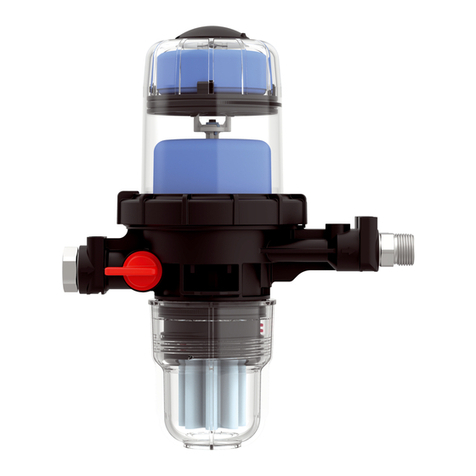
AFRISO
AFRISO FloCo-Top-1C Si operating instructions
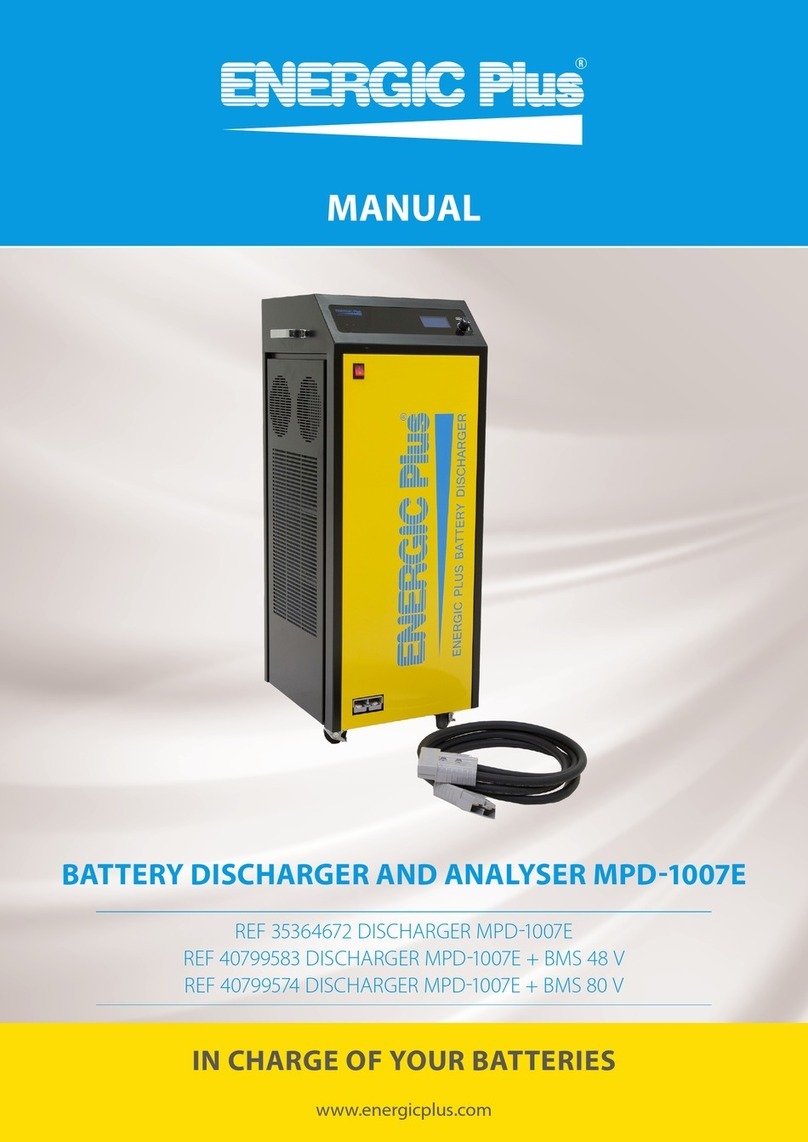
Energic Plus
Energic Plus MPD-1007E manual

D-tect Systems
D-tect Systems Mini Rad-V Installation and operating instructions
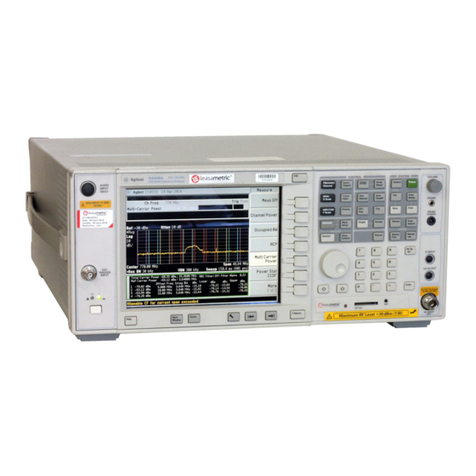
Agilent Technologies
Agilent Technologies PSA Series Installation note

AOFAR
AOFAR HX-700N manual
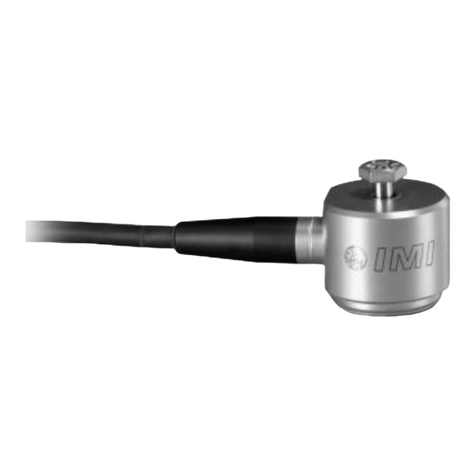
PCB Piezotronics
PCB Piezotronics IMI SENSORS VO625B11 Installation and operating manual

